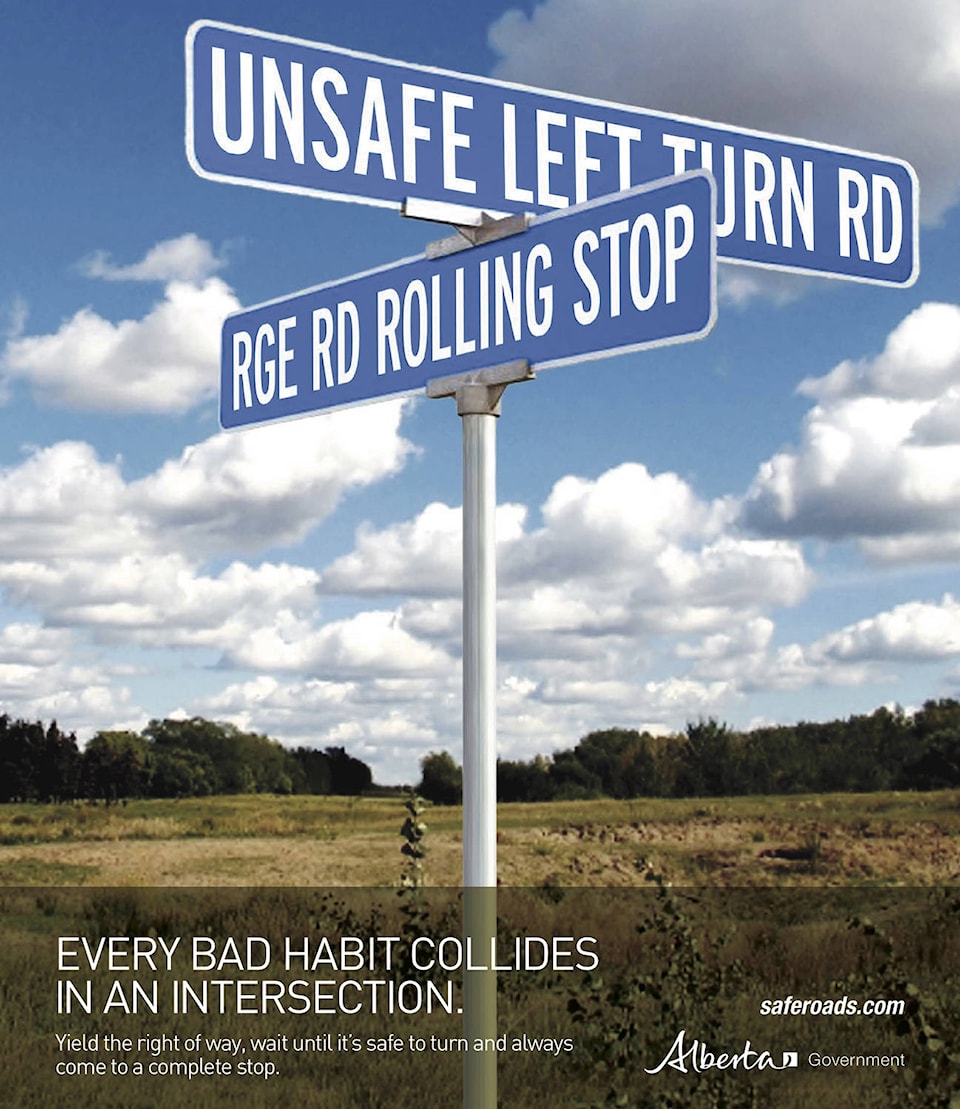As a way to connect with municipalities and hopefully continue to promote road safety, Ponoka County council was paid a visit from a government representative last week.
At its meeting Jan. 9, consultant Dona Tona with Alberta Transportation’s Office of Traffic Safety (OTS) made a presentation to outline just what is going on with its latest initiative — Vision Zero.
The Vision Zero concept, which started in Europe in 1992 and began just recently in Alberta, is, “based on the premise that fatalities and serious injuries are inevitable, because people make mistakes, but they are not acceptable,” stated Tona.
The system on the municipal side is about safe decisions being the easiest to make and that means focusing on things that are done well.
“Counties are great road builders and have big challenges with gravel and secondary roads,” she said. “With that, some things being looked at are reducing injuries by moving power poles further away from roads and ditches. The government vision is to create a shift in how we do business with road systems as part of the safe system approach.”
The system includes safe vehicles and safe speeds as well as reminding people that safety is a shared responsibility.
“If you look at the combined fatal/serious injury rate per 100,000 of population, that figure has gone down,” she added.
“Based on the rolling three year average, in 2016 that number was down to 64.3. However, that number is way too much as this is not a statistic, but they are people.”
The hope is that by connecting with municipalities, while providing grants and free promotional materials, that figure will continue to fall. The concept is significant as road use has steadily climbed from 2012 to 2016.
Statistics from the OTS shows licenced drivers rose 8.9 per cent, registered vehicles increased 7.7 per cent, highway volumes jumped 8.4 per cent, while the social cost of collisions (in 2015) — hospital stays, medical care, rehabilitation — ranged from $4.6 to 10.3 billion.
Tona also noted that she is the municipality’s connection for any concerns and council did express two things that could be addressed.
The first was how enforcement of traffic laws is being worked into the initiative with the other being how industry, specifically power lines, are located.
Tona stated Alberta Transportation is looking at doing what Saskatchewan has legislated, changing tow trucks to red and blue emergency lights, which she says has made a difference. As well, she added the concern about power pole locations near roads needs to be addressed and she will bring that concern back to the OTS as well as to industry.
